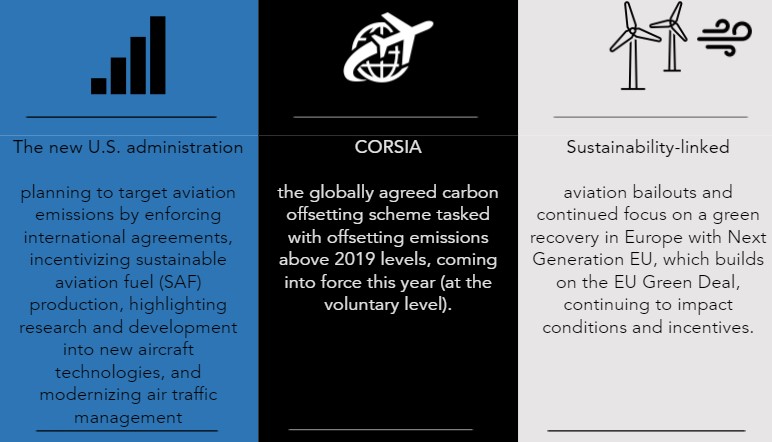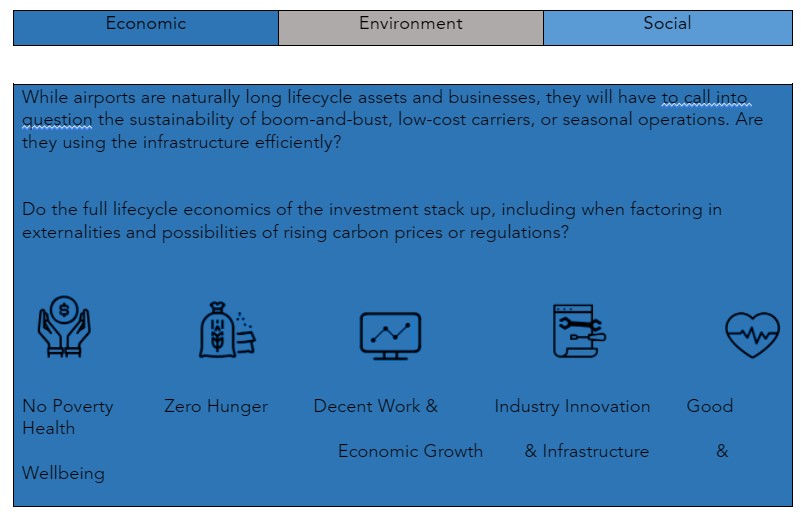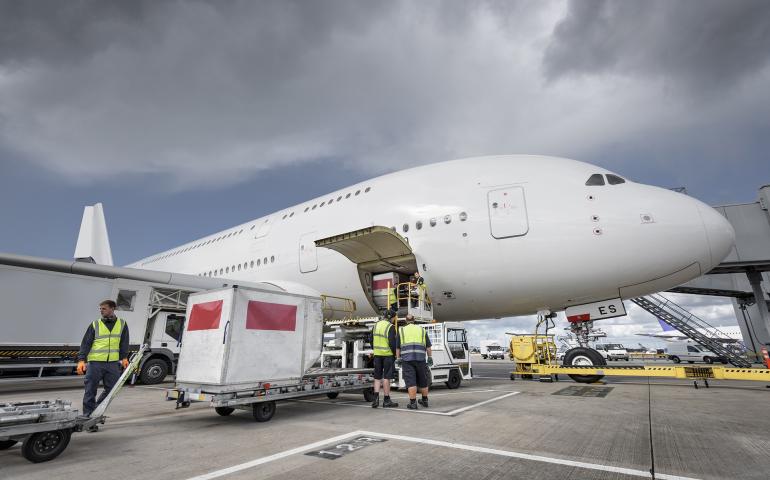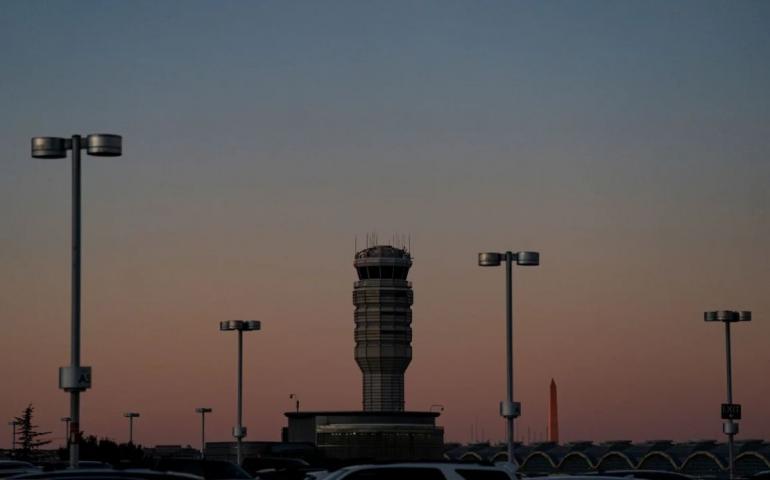
By Kata Cserep
With COVID-19 vaccination rates increasing and a green recovery well underway, how will airports adapt to the increased expectation of more sustainable operations?
Well before the COVID-19 pandemic, the topic of sustainability had been progressing upwards on the airport corporate agenda, driven by citizen activism, policy and regulatory direction, and airport stakeholders and communities.
Unlike during the Great Financial Crisis of 2008–2009 when the environment took a back seat, the COVID-19 pandemic has intensified the focus and the expectation of “building back better”—even while the world’s airlines grounded their fleets and airport terminals remained largely deserted.
We expect economies to gradually reopen as vaccination rates increase, but our recent forecast projects we are years from a return to pre-pandemic demand, as international traffic remains severely constrained by border closures, quarantines, and frequently changing policies.
At the same time, a “Green Recovery” is well underway, with 2021 already seeing:

What does all this mean for airports? The expectation of sustainability in aviation
As the visible face of aviation, airports have for a long time been at the forefront of sustainability-related debates, whether debates around noise or local air quality impacts, the feast and famine of seasonal tourism and destination management, waste management, or inclusive and fair working practices. These are not new challenges, and many airports have built experienced teams and impressive strategies to address them.
What is different now is that sustainability is expected, increasingly, by ever more stakeholders to permeate all aspects of an airport’s strategy and business model—especially if that airport wishes to retain its central role in local and national economies and societies.
Sustainability is already impacting passenger demand. Even before the COVID-19 pandemic, the concept of “flight shame” was becoming more widespread, though its visible impact on global demand was limited to northern European markets. After more than a year of travel restrictions, both habits and expectations are changing, and not only in Europe. Our corporate and passenger surveys suggest that travel behavior, at least in the short to medium term, will be different. It is expected that business and long-haul travel will be most negatively affected. It is not yet known how significant long-term travel patterns are likely to be, although there is a general consensus that growth will not return to pre-2020 trends.
On climate, it is no longer an option for airports to hide behind the argument that they are “a small share of a small share”. Aviation as a whole remains below 5% of carbon emissions, and airports’ own emissions are less than 5% of these emissions; however, experts forecast these shares to increase significantly in the coming decades as other sectors decarbonize.
Investors, local governments, and policymakers are expecting change. Several major economies are making net-zero carbon commitments which airports will be required to fall in line with; major infrastructure investment funds and pension funds are also making commitments regarding their portfolios.
Where to start with sustainability
The need to truly embed the triple pillars of sustainability—economic, environmental, social—in airport strategy and key performance indicators are becoming clear.
Numerous airports are already well advanced in this area and cite this both as a simple necessity to ensure social license to operate and as a positive differentiator for employees, customers, and communities. A responsibly operated airport can serve as a positive showcase of innovation, economic value, and social inclusion by generating jobs, investing in skills, and facilitating trade and tourism flows—all while taking responsibility for its impacts on others.
Though very general, the United Nations’ sustainable development goals (SDGs) can provide a helpful reference point for considering the sustainability aspects of airports.
Not all the goals have a natural link to airport operations, but several do, and they can form a foundation for airport-specific priorities:

What a sustainable future looks like
Embracing the challenge to embark on more forward-thinking and sustainable paths will present many opportunities to come. For one, as wider policies commit to supporting global decarbonization, airports are likely to find that their electricity purchases will become greener as the grid decarbonizes. And where sustainability is insufficient to meet goals, additional on-site renewables (e.g., solar panels) will continue to become more commercially competitive as these technologies mature.
When airports need to replace assets such as vehicle fleets, electric versions are likely to be on par with petrol and diesel versions in terms of cost.
Innovation will present new opportunities to grow more sustainably. Airports will build new terminal buildings to much higher environmental standards than those of 20 to 30 years ago. In addition, returning growth will provide favorable conditions to transform without it being solely an extra cost burden.
Airports will continue to play an important role in connecting communities and generating local employment opportunities in the wake of the COVID-19 pandemic. Airports will become more consciously connected to their employee and community stakeholders, actively supporting diversity and inclusion, as well as collaborative and consultative development projects.
ESG reporting requirements will continue to increase as investors and regulators demand more transparency and accountability. Also, new finance sources will be available if investments are green (alternatively, funding will not be available if investments are not demonstrably sustainable).
Even with the most aggressive and positive projections, more extreme weather events will continue. Airports need to understand the risks to their own assets and operations and have in place plans and procedures to weather the next storm.
Going back to the old normal is not an option for individual airports—or for the aviation industry as a whole.
Sustainability in aviation is here to stay.





Facebook comments